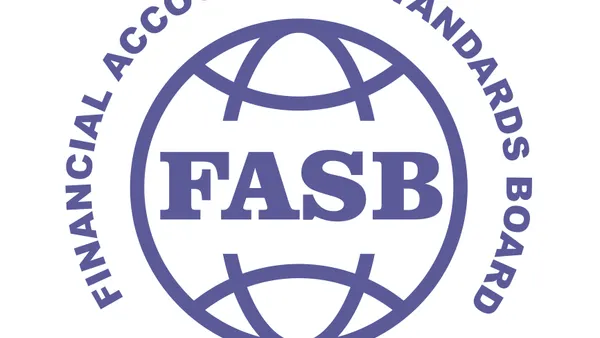In the early and mid-2010s, there was an uproar over some U.S. corporations' practice of shifting revenues and profits overseas to low-tax countries. The strategy, which is legal, often involved transferring intangible, income-producing assets like patents and copyrights to foreign subsidiaries. Companies could defer the U.S. tax liability on those subsidiaries' income until the earnings came back to the U.S. as dividends.
The 2017 Tax Cuts and Jobs Act (TCJA) changed how those foreign earnings are taxed. Although controlled foreign corporations' (CFCs) active business earnings are still taxed at the local country's rate, they now are generally exempt from the regular U.S. corporate tax rate of 21% (assuming that such earnings are not taxed under the CFC anti-deferral rules), even when they are repatriated to the U.S.
This change creates a potential risk of eroding the U.S. tax base and reducing tax revenues if companies were to shift more assets overseas, particularly highly profitable intangible assets.
To address that concern, as part of TCJA, Congress created the new revenue classification of Global Intangible Low-Taxed Income, aka GILTI.
GILTI's purpose is to approximate the income earned overseas from intangible assets and collect a U.S. tax on that income.
"Congress enacted GILTI as a CFC anti-deferral rule," Joseph Calianno, CPA, JD, LLM Tax, MBA, partner and international technical tax practice leader with BDO, told CFO Dive. "Before you had the GILTI regime you had and still have the Subpart F regime, another CFC anti-deferral regime. With the advent of the GILTI regime, a lot more income of CFCs is included in income onshore, even though it's not being repatriated."
How it works
Raymond Wynman, CPA, managing director of Global Tax Management Inc.'s international tax practice, summarizes for CFO Dive the GILTI calculation in the following steps. (See bottom table for numerical example.)
Step 1
Start with total earnings after tax for foreign entity. Subtract Subpart F earnings, Subpart F high-taxed earnings and U.S. source earnings. Subpart F earnings are taxed in the U.S. immediately and are generally referred to as a passive type of income or income that can easily be moved from the U.S. to foreign jurisdictions. The result is the CFC's tested income.
Step 2
Calculate the CFC's qualified business asset investment (QBAI), which is essentially tangible depreciable net assets. Multiply QBAI by 10%; that amount is considered earnings on tangible assets and is not subject to U.S. tax. Subtract the 10% amount from tested income to derive the net deemed intangible return income return.
Step 3
Subtract net deemed tangible return income from tested income to derive GILTI before foreign tax gross-up.
Step 4
Calculate the foreign tax attributable to GILTI. This is the foreign tax gross-up.
Step 5
Calculate U.S. tax on GILTI plus foreign tax gross-up (combined "GILTI"). Corporations can take a 50% GILTI deduction for tax years beginning after Dec. 31, 2017, and before Jan. 1, 2026. The U.S. tax of 21% on the remaining 50% can be reduced by a credit for up to 80% of foreign tax paid on the GILTI income.
This is a high-level explanation of GILTI, but it illustrates the regulation's intent, as well as the mechanics. CFCs with substantial investments in tangible, depreciable property will have more QBAI and less GILTI exposure than comparable service and tech businesses. "Technology companies with [intellectual property] and service companies are the ones that are really being hit a lot more than tangible manufacturers," Wynman said.
Planning for GILTI
Barret Pinto, CPA, tax director with CBIZ & MHM, told CFO Dive corporate clients are considering several GILTI-minimization options. Increasing QBAI is one possibility. (There is some interesting academic research on multinationals' post-TCJA capital investments.)
Transfer pricing analysis can show if a company is reporting the correct amount of income from CFCs. "Is there an opportunity to adjust transfer pricing to reflect some deductions or lesser income in this jurisdiction?" Pinto asked. "Can the U.S. company move debt to CFCs to create some interest expense deductions in those foreign corporations?"
Wynman suggests companies examine earnings, deductions and foreign taxes to determine if they can use foreign tax credits to minimize GILTI. The goal is to minimize the income inclusion by having additional deductions or maximizing the foreign taxes, he said.
One possibility is to accelerate foreign taxes for use as credits. Increasing high-taxed earnings is another. Under proposed Treasury regulations issued in June, taxpayers could elect to exclude CFC income items subject to foreign income tax at rates that exceed 90% of the current 21% maximum U.S. corporate rate, or 18.9%. Wynman recommends caution with this strategy until the regulations are finalized, however.
Calianno suggests U.S. corporations considering acquiring foreign corporations from unrelated parties in taxable transactions look at the possibility of making a Section 338(g) election. When the election is available, a foreign target's basis in its assets will be increased for U.S. federal tax purposes, assuming the assets are appreciated, once it is owned by the acquirer, he said.
This can result in the CFC having greater depreciation for tangible assets and greater amortization for intangible assets and less gain on such assets when they are sold. This may lead to the CFC generating less tested income or generating a tested loss and reduced GILTI exposure. "Further, to the extent that there is an increase in the basis in QBAI, there can be a reduction in the GILTI inclusion under the formula for calculating GILTI, assuming that the CFC with QBAI generates positive tested income," he said.
Don't ignore your GILT(I)
Calianno said the GILTI regime has transformed international tax. "U.S.-based multinationals with CFCs now have to spend a lot more time determining their GILTI exposure because in the past you just had this Subpart F regime that I think most U.S. multinationals were able to manage," he said. "Now taxpayers have to take into consideration the rules for both Subpart F and GILTI. With GILTI, it's much broader, and if such income isn't included in income under the Subpart F regime, it needs to be tested under the GILTI rules. As a result of GILTI, much more income generated by CFCs is now being taxed onshore through the GILTI regime, so it's really had a pretty significant impact."
Simplified GILTI calculation
Assumptions:
1. CFC annual pretax income: $5,000,000
2. Qualified business asset investment (QBAI): $15,000,000 in plant and equipment (net of depreciation)
| Case 1: 7.5% Foreign Tax Rate | Case 2: 15% Foreign Tax Rate | |
| Pretax income | $5,000,000 | $5,000,000 |
| Less: Foreign tax on $5,000,000 | $375,0000 | $750,000 |
| Tested income | $4,625,000 | $4,250,000 |
| Net deemed tangible income return ($15,000,000 * 0.10) | $1,500,000 | $1,500,000 |
| Global Intangible Low-Tax Income (GILTI) | $3,125,000 | $2,750,000 |
|
Foreign tax attributable to GILTI ($3,125,000/4,625,000x375,000) Or ($3,125,000/4,625,000x750,000) |
$253,378 | $485,294 |
| GILTI inclusion | $3,378,378 | $3,235,294 |
| Minus 50% GILTI deduction | ($1,689,189) | ($1,617,647) |
| GILTI subject to U.S. tax | $1,689,189 | $1,617647 |
| U.S. tax on GILTI (21%) | $354,729 | $339,706 |
| Minus foreign tax credit attributable to GILTI x 80% | $202,703 | $338,235 |
| GILTI tax due = U.S. tax - foreign credit | $152,027 | ($48,529)* |
*Excess credits cannot be carried forward or back. The writer thanks Raymond Wynman, CPA, for his help with this example.



















